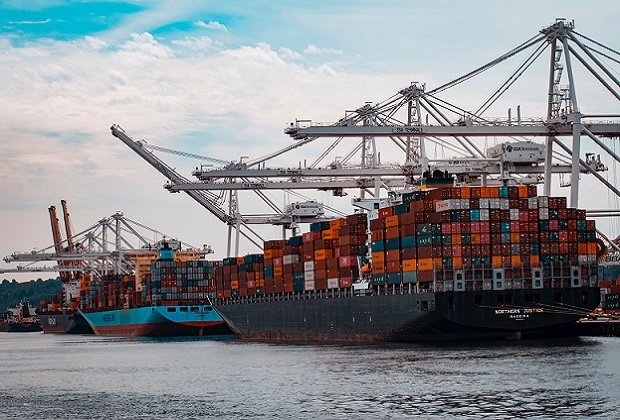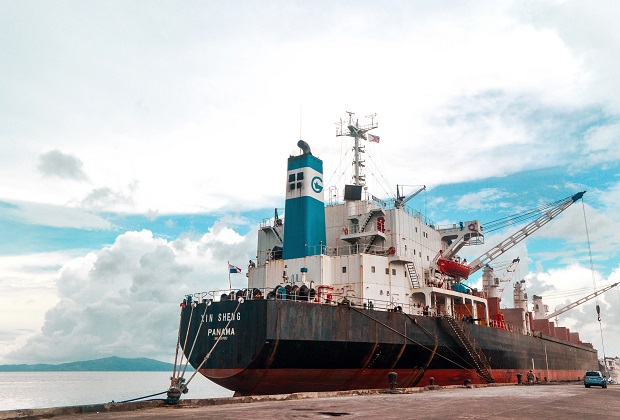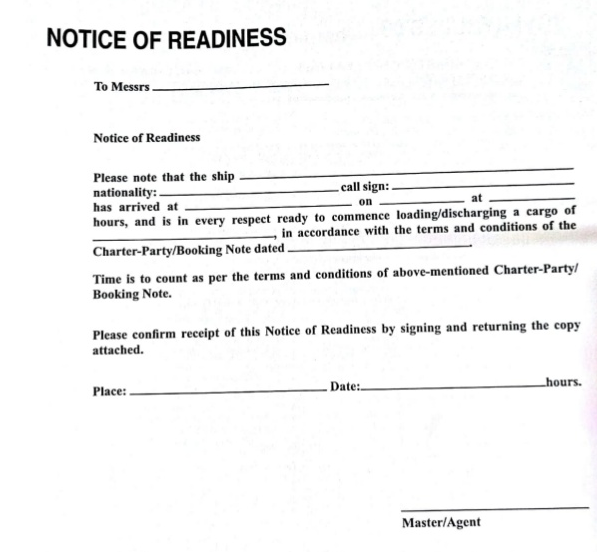A Notice of Readiness (“NOR”) is a notification by the vessel that she is ready to start the charter service (upon delivery) or is ready to load or discharge cargo. Giving an NOR has two purposes: (i) to inform the charterers that the vessel is at their disposal; and (ii) to start the running of hire or laytime.

Disputes often occur in relation to the validity of a NOR, in particular under voyage charter parties.
1) The general requirements for a valid NOR:
There are three requirements to be met in order to tender a valid NOR:
- The vessel must have reached the agreed place (being an “arrived ship”);
- The vessel must be “physically ready”; and
- The vessel must be “legally ready”.
a) The vessel must have reached the agreed place:
In order for the vessel to be an “arrived ship”, the NOR must be tendered when the ship has arrived at the contractual place of delivery, loading or discharging.

The charter party will usually state where the vessel must be before a valid notice of readiness can be tendered. The ship must be at the immediate and effective disposition of the charterer, having come to rest at the place at which she can be described as an “arrived ship”. Where that place is depends upon the terms agreed in the charter party.
In the most simple case, the place will be the name of a port, dock or a berth.
In voyage charters in particular it is sometimes hard to determine the place when the charter mentions both the port and a berth. It is always a matter of construction whether the agreed destination is the port or the berth. For example, a charter which describes the destination as “one safe berth, London” is a berth charter, but one which describes the destination as “London, one safe berth” is a port charter (the reference to a berth is to be construed as a safe berth warranty).
In a berth charter, owners can only tender the NOR when the vessel has actually berthed.
In the case of a port charter when no berth is available, the vessel must normally have reached a position within the port where waiting ships usually lie.
In this regard, the customary waiting area does not have to be “the commercial area of the port”, but can be the “legal, fiscal and administrative area of the port”.
However, if the customary waiting area is outside the limits of the port, then no valid notice of readiness can be served. However, some charters
(Gencon for example) extend the waiting place beyond the port.
The above basic principles can however be varied by the terms “whether in berth or not” (“WIBON”) or “whether in port or not” (“WIPON”). The phrase “whether in berth or not” converts a berth charter into a port charter and ensures that under a berth charter party the NOR can be given as soon as the ship has arrived within the port’s commercial area. However, this is only when the berth is inaccessible due to congestion and not bad weather. (This is because the charter party puts the risk of navigational delays onto owners and of commercial delays onto charterers.)
It is thought that the phrase “whether in port or not” will mean that an NOR can be tendered outside port limits as long as the ship is at the port’s usual waiting area.
Also, some voyage charters commonly contain other exceptions and will for instance state that the commencement of laytime will start “Whether Customs Cleared or Not” (WCCON) and “Whether in Free Pratique or Not” (WIFPON).
b) The vessel must be physically ready:
In order to be ready the ship must be prepared in such a way that it is able to commence cargo operations without delay and to comply with charterers’ orders whenever they are given. The vessel must therefore be “physically ready” and “legally ready”.
The requirement for the vessel to be physically ready will include that the holds are suitable to receive cargo in accordance with the charter. In respect of time charter parties for example, on delivery, the NYPE (1946) forms requires that, at the time of its delivery, the vessel is to be “ready to receive cargo … with clean-swept holds and tight, staunch, strong and in every way fitted for the service”.
The Baltime form requires by lines 25 and 26 that the ship is “in every way fitted for ordinary cargo service”. Other rider clauses often supplement the standard clauses and impose additional requirements.
The vessel generally needs to be ready in all respects to load or to discharge the whole cargo. This extends to all equipment required for the cargo operations (such as, hatches, cargo gear and equipment etc.). This does not mean, for example, that hatch covers have to be open before a valid NOR can be given. It does mean that the vessel has to be ready and able to commence the charter service required of the vessel without delay when charterers give orders to load or discharge.
However, as regards hold cleanliness, see below.
c) Legal readiness:
In order to tender a valid NOR the vessel (not the cargo) must be legally ready. This requirement will include:
- Customs clearance or entry;
- Immigration and police approval; and
- Health or free pratique
All papers necessary for the commencement of the charter service, loading or discharging must be in order for the vessel to be legally ready. If charterers are to arrange for a certain document or certificate before the vessel can carry out its cargo operations they have to do so with reasonable speed to enable owners to tender a valid NOR. An NOR tendered after this reasonable period has expired would probably still be valid, if all other requirements have been met.
2) The format of the NOR:
In law, there is no prescribed form for tendering NOR. It merely has to be a statement that the vessel is ready to be delivered or load or discharge as the case may be. The NOR must be accurate in that the vessel is in fact ready.
Unless the charter party states otherwise nothing else is required. However, charter parties often contain express provisions on form and contents of the NOR.
3) Additional requirements under the charter party:
a) NOR on delivery of the vessel under the charter-hold cleanliness:
It is common for charter parties to have provisions about the cleanliness of the holds. For example, time charter parties typically contain a hold cleaning clause which will state: “on delivery, all holds to be clean, swept, free from all cargo residue … failing which the vessel to be off hire from the date and time of the failure to the date and time of being inspected and passed by the surveyor”.

With such a clause it is arguable that for a ship to be “off-hire” as stated, the ship must first have been accepted so that the NOR must have been valid. This implies that the holds do not need to be ready for the NOR to be valid and that if the vessel’s holds are not clean on delivery charterers will have to accept the ship and their only remedy will be to put the ship off hire.
Conversely, in respect of voyage charters, if the cargo holds are not ready it is likely that the vessel is not physically ready and any NOR given will be invalid.
b) NOR tendered to be tendered during office hours:
Some charters stipulate that the NOR should be tendered during office hours (eg “notice of readiness to be tendered within 06.00 and 17.00 local time”).
The fact that the NOR is tendered outside these hours (say 21.00 hrs) will not in itself render the NOR invalid. Unless the charter provides otherwise, such an NOR will be treated as having been given the next working day when office hours begin.
4) What happens if the NOR is invalid but there are other delaying factors?
Owners may argue that although the ship was not ready, because of some other factor (port congestion, for example) there was no actual delay which resulted from the lack of readiness. It is not relevant whether the ship was actually delayed in carrying out the cargo operations. The important question is whether the ship was ready at the time of tendering the NOR. If the ship was not ready (apart from minor and routine matters) then the NOR will be invalid.
5) Does an invalid NOR become valid once the requirements are met?
No. If the NOR is tendered before the ship arrives at the contractual destination or is not “ready”, the NOR is invalid. An invalid NOR will never become valid. The owners, therefore, have to serve a new NOR when the conditions are met in order not to have the charter cancelled or run the risk that time does not count. If there is any doubt, it is recommended to serve fresh NORs without prejudice to the previous NOR/s.
6) What is the effect of tendering an invalid NOR?
a) NOR tendered on delivery of the vessel -rejection of the vessel and cancellation of the charter:
If on delivery owners tender an invalid NOR, the ship will be deemed not to be ready and not to have been delivered and if the ship is not ready by the end of the laycan period, charterers will have the option to cancel the charter. Charterers are, however, not entitled to cancel before the cancelling date even though there is no way the ship will ever be ready by the cancelling date (although if charterers can show that the vessel would not have been ready by the cancelling date, owners are unlikely to be able to prove any loss/damages against charterers).
In the context of voyage charter parties there is an argument that if the cargo gear (not the holds) are not ready, this would not be sufficient to cancel the charter. The situation is not the same for time charter parties as, for example, the NYPE forms stipulate that the ship must be “in every way fitted for service”.
b) NOR tendered during the charter -commencement of laytime and hire
With regard to the running of laytime or hire, if the NOR is invalid, time will not start to count. If however charterers start using the ship (loading or discharging), there is an argument that time will start to count from that moment.
7) What happens if charterers accept an invalid NOR?
Even though, as stated above, an invalid NOR will never become valid, charterers may be deemed to have accepted an invalid NOR either expressly or by their conduct, in which event, charterers may lose the right to argue that the NOR is invalid.
This is particularly so if charterers had reasonable opportunity to ascertain the vessel’s true condition. Acceptance by conduct could be demonstrated if charterers have conducted themselves in such a way as to show that they intend to be bound by the charter party (for example giving orders to a ship to load cargo).
Acceptance of an invalid NOR can be made by the shippers or receivers who are considered to be charterers’ agents.
In order not to lose any rights, therefore, charterers should accept a potentially invalid NOR on a “without prejudice to the charter” basis. Just because charterers have accepted an invalid NOR does not mean that they have waived their right to claim damages for any loss suffered. However, charterers may by their conduct be held to have waived their claim in damages.
For example, where owners have to deliver a ship which is grain clean but do not do so (because there is coal residue in the hold) and charterers still accept the vessel and owners’ NOR as they intend to load steel slabs as a first cargo, if charterers do not reserve their rights to claim damages and simply accept the ship, they may well lose the right to claim for time lost and cost of hold cleaning before loading the second cargo if this was due to the coal residue in the hold.
